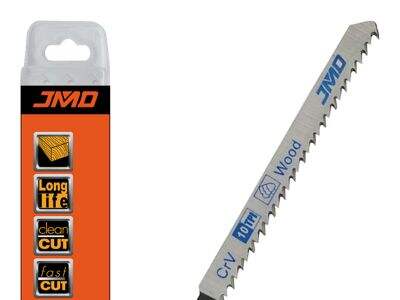Key Materials to A Plumber Like You Who Uses Them in Cutting Pipes
They are other plumbing-related work that requires a reciprocating saw blade. Therefore, it is important to pick the right blade for the type of job so that you do not end up putting your hard work to waste. we are here to help you in choosing the best reciprocating jigsaw blade for plumbing tasks.
Different Types of Reciprocating Saw Blades Explained
There are different types of reciprocating saw blades, and each one was made for the blade-cutting task as well as materials. The 2 major types of blades are Bi-Metal as well as Carbide-Tipped Bi-metal blades are long-lasting, well-rounded with the functionality of cutting through most materials like woods, metals, and plastics. Carbide-tipped hacksaw blade can be costly but they give better cutting and longer life for the hardest of materials and is suitable for metal or masonry.
How to Choose the Perfect Blade for the Work
Choose the right material and thickness for reciprocating saw blade when using with a plumbing job. A bi-metal blade with fine teeth is a good option for cutting plastic pipes. Metal pipes WILL get cut more quickly and cleanly with a carbide-tipped blade with a larger tooth pitch. Ensure you use a blade compatible with your reciprocating saw for the best level of performance.
Ways to Keep Your Reciprocating Blades Last Longer
In order to get the best life from your reciprocating saw blades, you are a few tips for proper and maintenance of them.
Helpful Tips to Get More from Your Razor Blade
– Use the appropriate blade for the material you are cutting.
• Avoid buildup and make sure your mowers are not overloaded as this can cause overheating.
– Keep it well-oiled to minimize wear and tear on the blade.
— Keep the blades in a dry place when not in use to prevent rust and corrosion.
All in all, if you would like your reciprocating saw blades to last longer and aid you at work, these aforementioned tips will help you.
How to Effectively Use Reciprocating Saw Blades and Safety Measures
As important as reciprocating saw blades can be, they should always be treated with all due respect and caution to prevent injury. Here are some safety tips you should remember:
Always use safety goggles and gloves to protect your eyes and hands from debris.
· The saw must be moved off and detached before the blades are swapped.
Step 2- Clamp the material you are cutting so that it cannot move.
Never in any circumstance should your serve reach close the blade while it is running.
Following these safety tips when using reciprocating saw blades will help you and others stay safe on the job.
Plumbing Problems: Blade Edition
There will also be times when you will face a number of problems with your reciprocating saw blades that are likely to take effect on how they work. Let us through common blade issues and how to work on them:
Blades going blunt: If your blade does not appear to cut with the same smoothness as it once did, chances are the blade has gone blunt. Either sharpen the blade or replace it with a new one.
Blade bending: If your blade is bending while cutting, this could be a sign of too much pressure or a dull blade. Swap Blade with More Durable privation
Blade Breakage: Your blade breaks when you are cutting because you were using the incorrect blade for the material or incorrect cutting technique. Simply use the right blade and cut it properly so that there will be no breakage.
It is good that by addressing these common blade issues timely, you can reduce the setbacks in your work and be able to finish most of your plumbing tasks quicker.
Above all, reciprocating saw blades to be the best for plumbers and other professionals who always in-demand precision cutting tools. In knowing the different kinds of blades, guidance on how to select and maintain them, safety precautions where you practice this knowledge and how to solve regular blade issues, you can harness your reciprocating receptacle saw blades as a conduit (no pun intended) for your plumbing work to go up another level. Just know that with the right tools and information, you can do any plumbing job with the confidence of a seasoned professional. From your friends at JMD, Happy Cutting … and — simply enough — HAPPY PLUMBING!
Table of Contents
- Key Materials to A Plumber Like You Who Uses Them in Cutting Pipes
- Different Types of Reciprocating Saw Blades Explained
- How to Choose the Perfect Blade for the Work
- Ways to Keep Your Reciprocating Blades Last Longer
- How to Effectively Use Reciprocating Saw Blades and Safety Measures
- Plumbing Problems: Blade Edition

 EN
EN
 AR
AR
 BG
BG
 HR
HR
 CS
CS
 DA
DA
 NL
NL
 FI
FI
 FR
FR
 DE
DE
 EL
EL
 IT
IT
 JA
JA
 NO
NO
 PL
PL
 PT
PT
 RO
RO
 RU
RU
 ES
ES
 SV
SV
 LV
LV
 LT
LT
 SR
SR
 SK
SK
 SL
SL
 UK
UK
 ET
ET
 HU
HU
 TR
TR
 FA
FA
 GA
GA
 CY
CY
 BE
BE
 IS
IS
 HY
HY
 AZ
AZ
 KA
KA
 LA
LA
 MY
MY
 XH
XH

